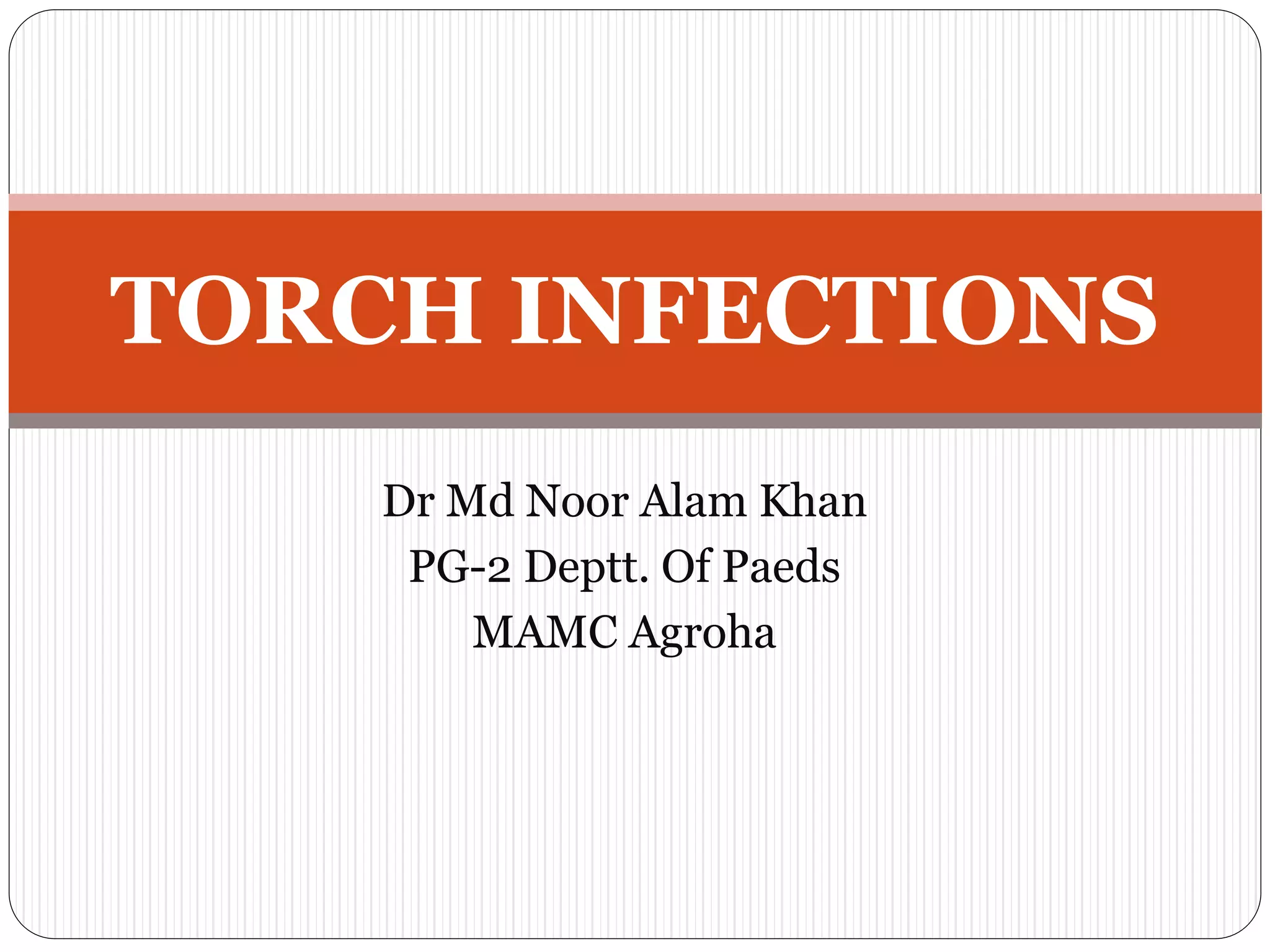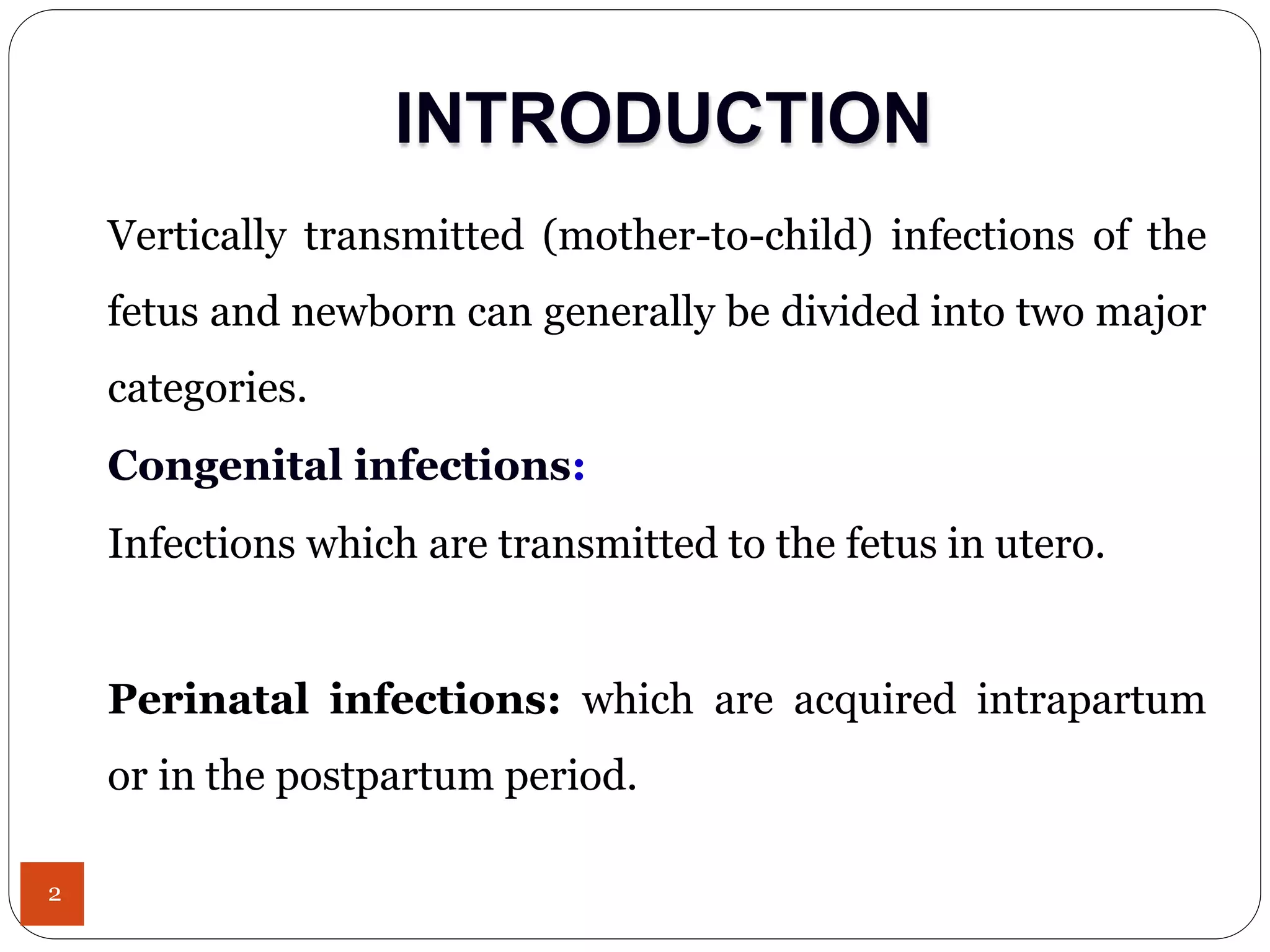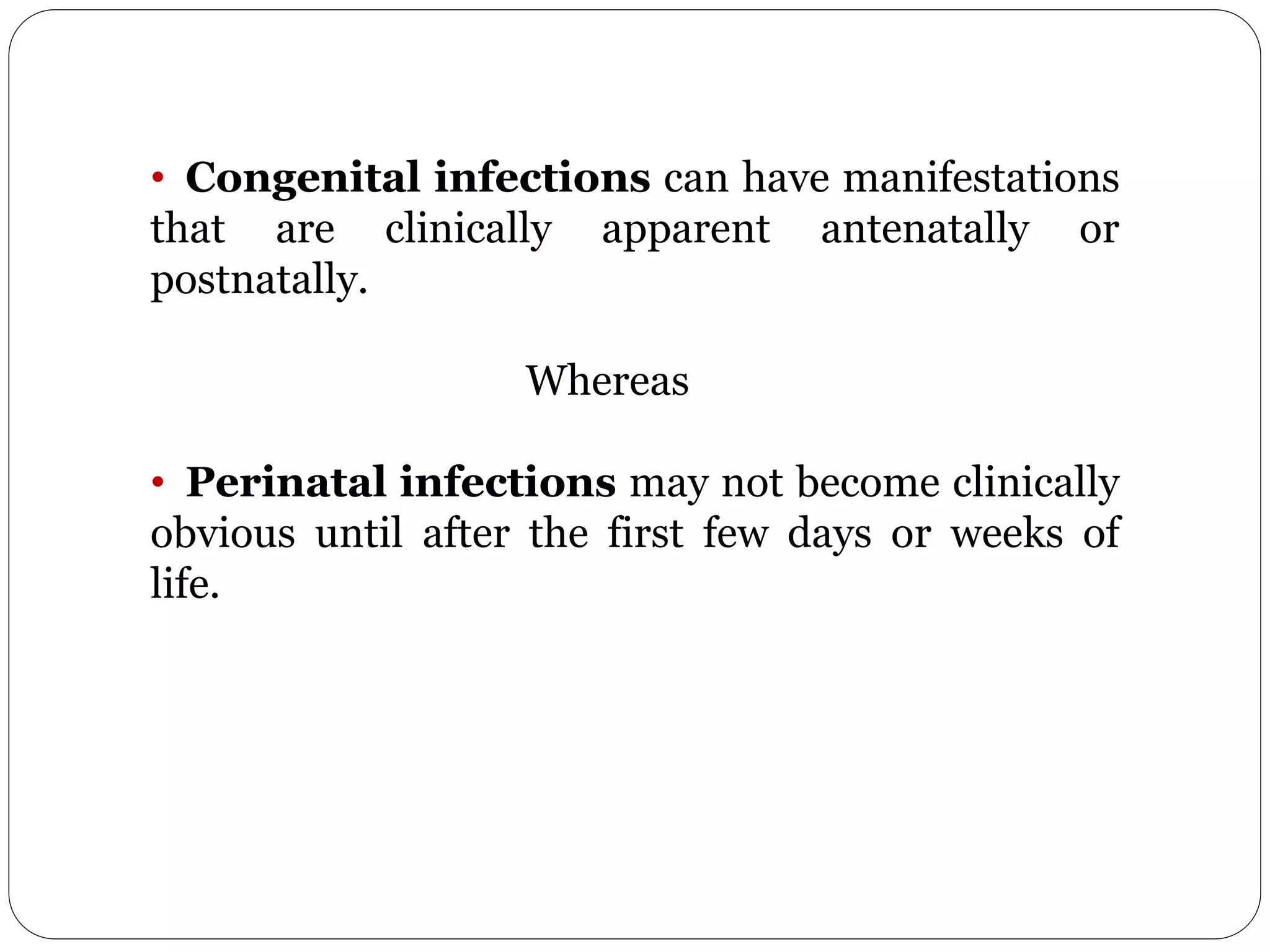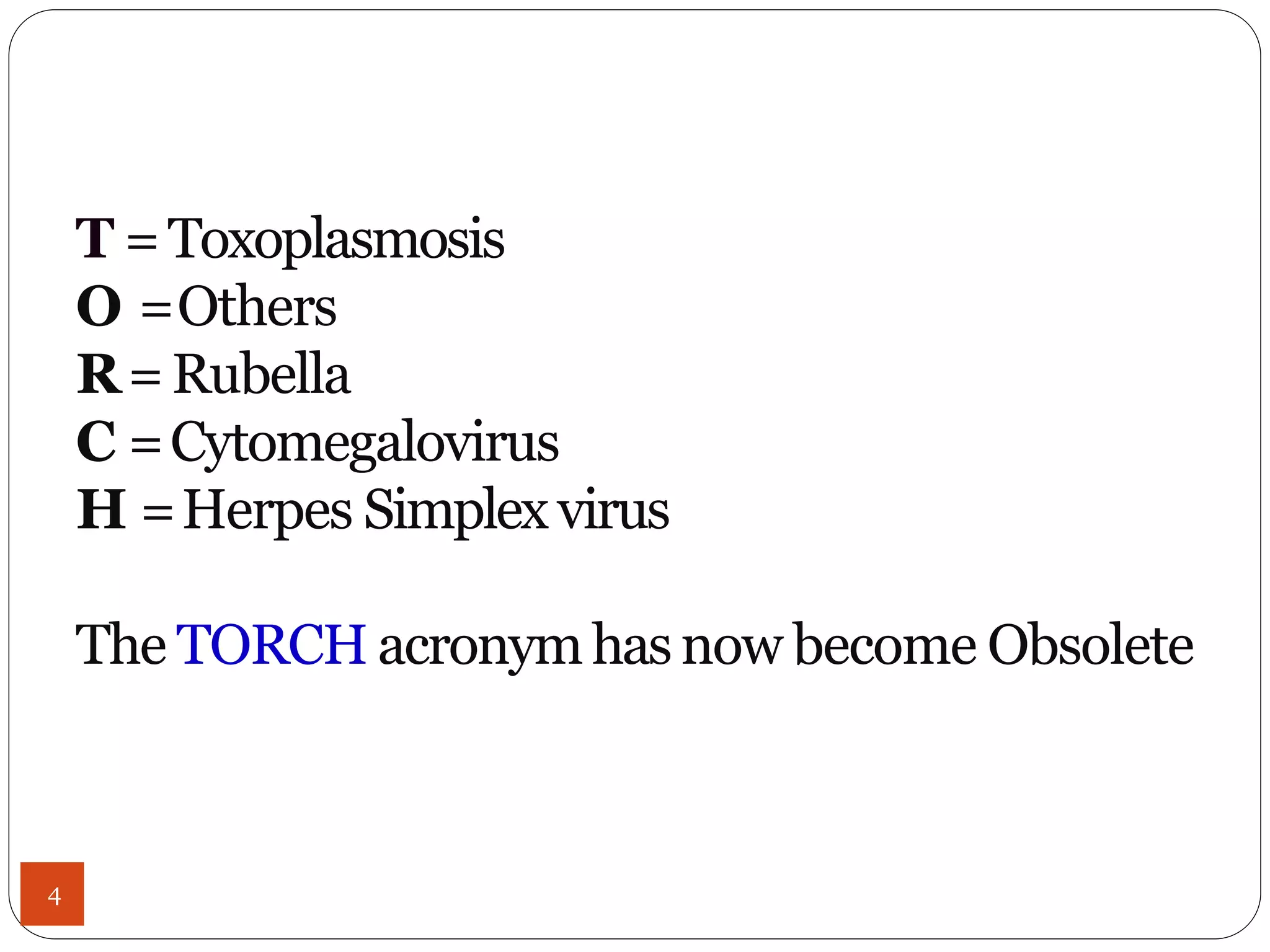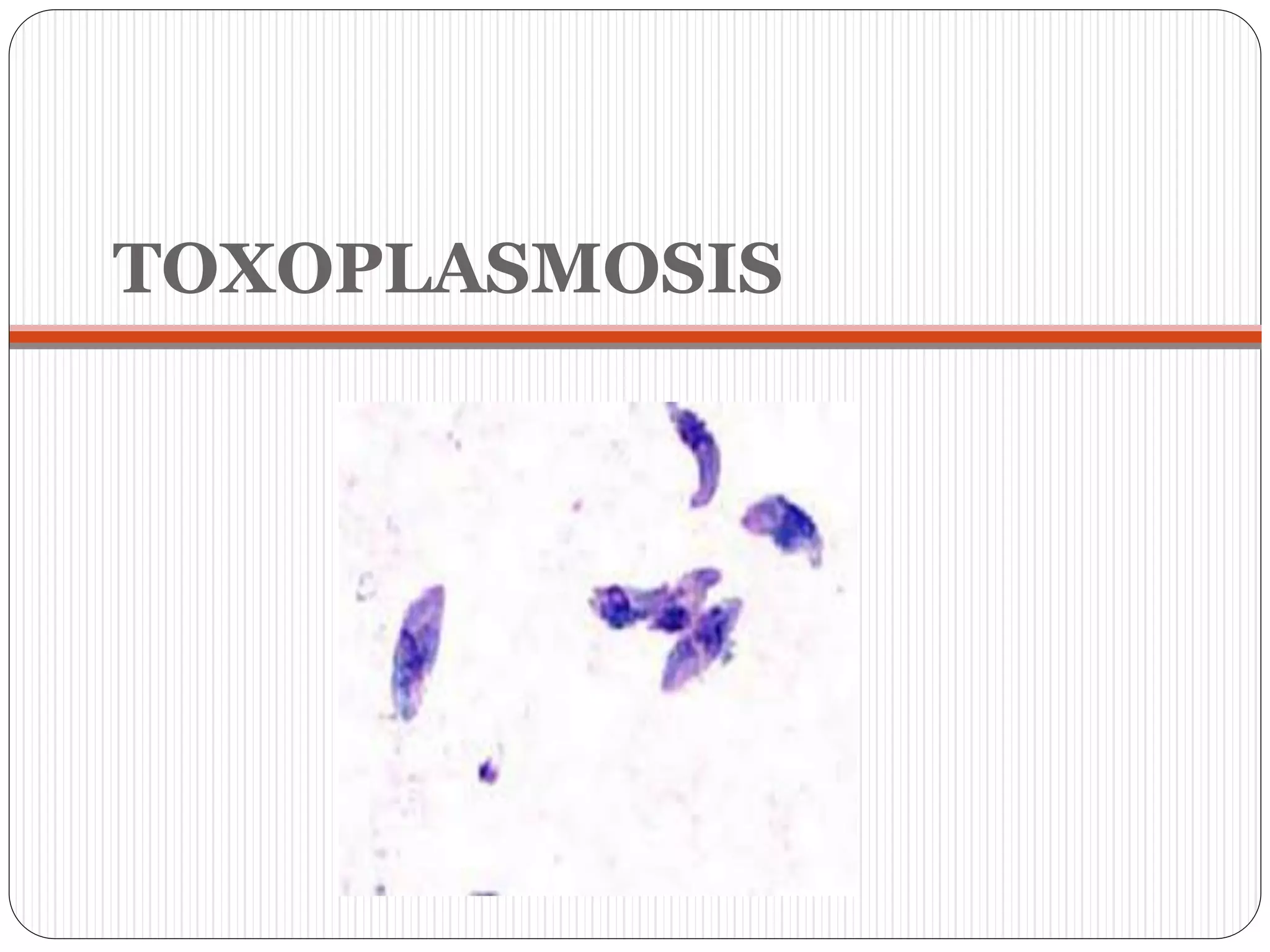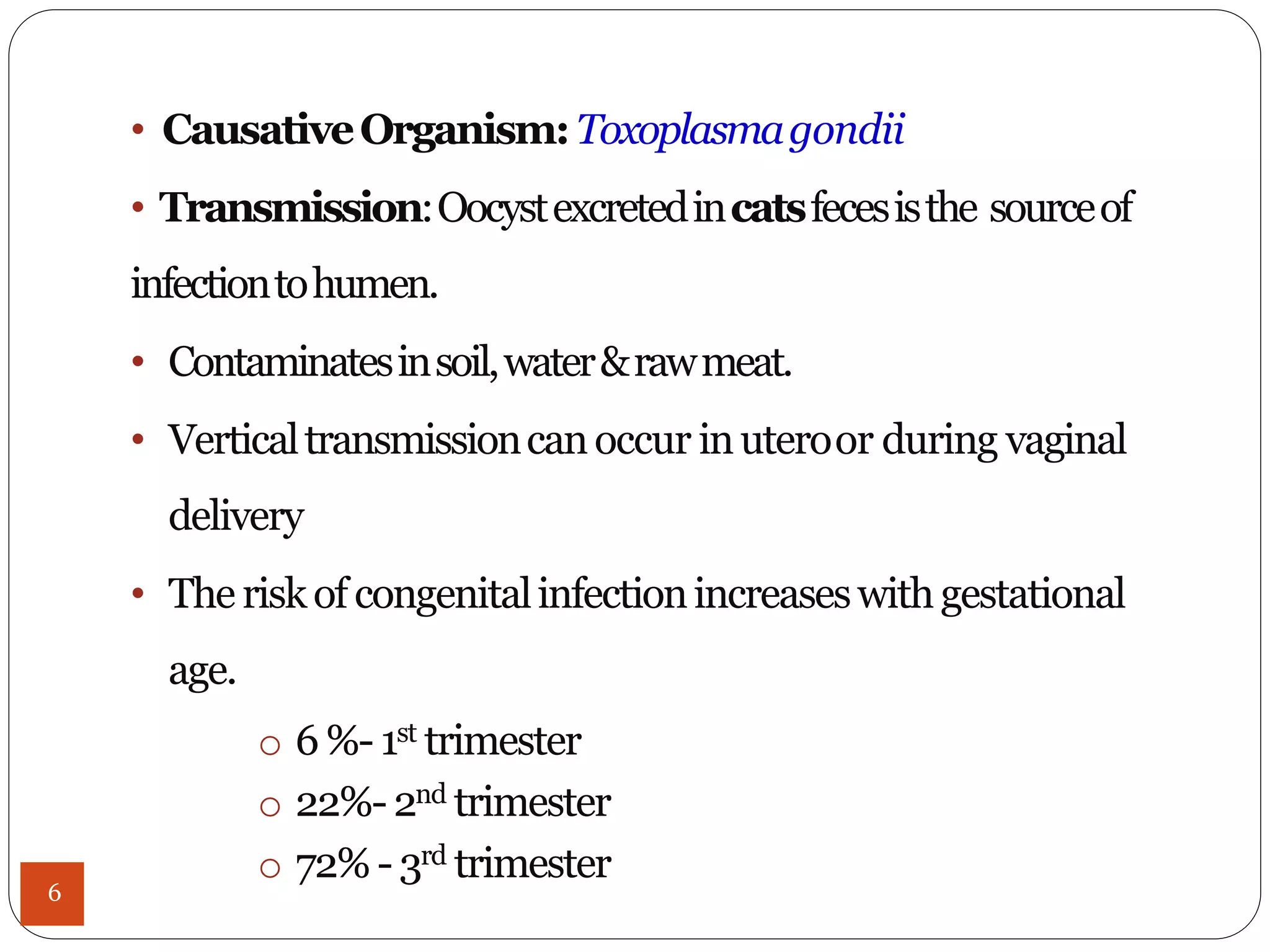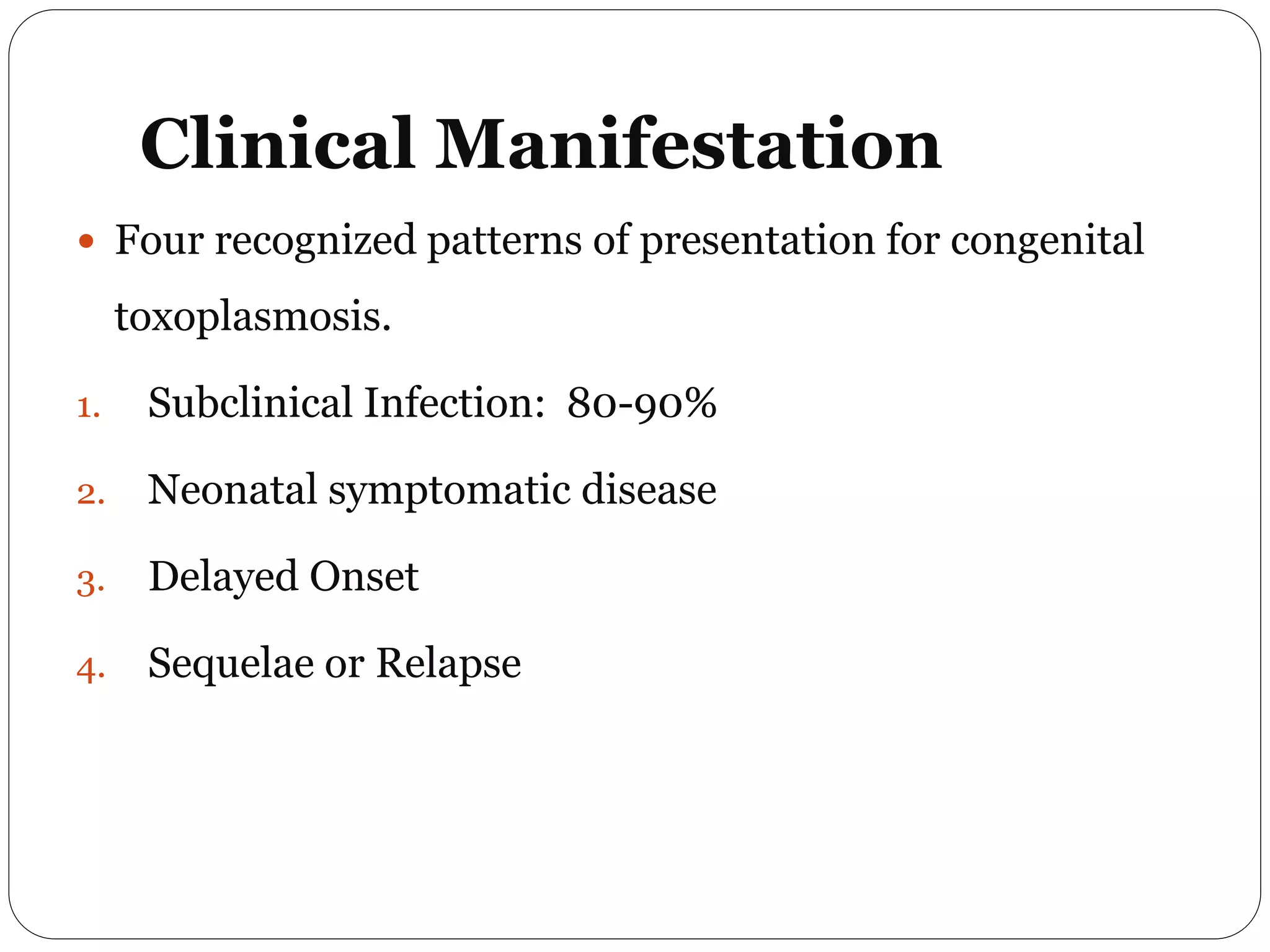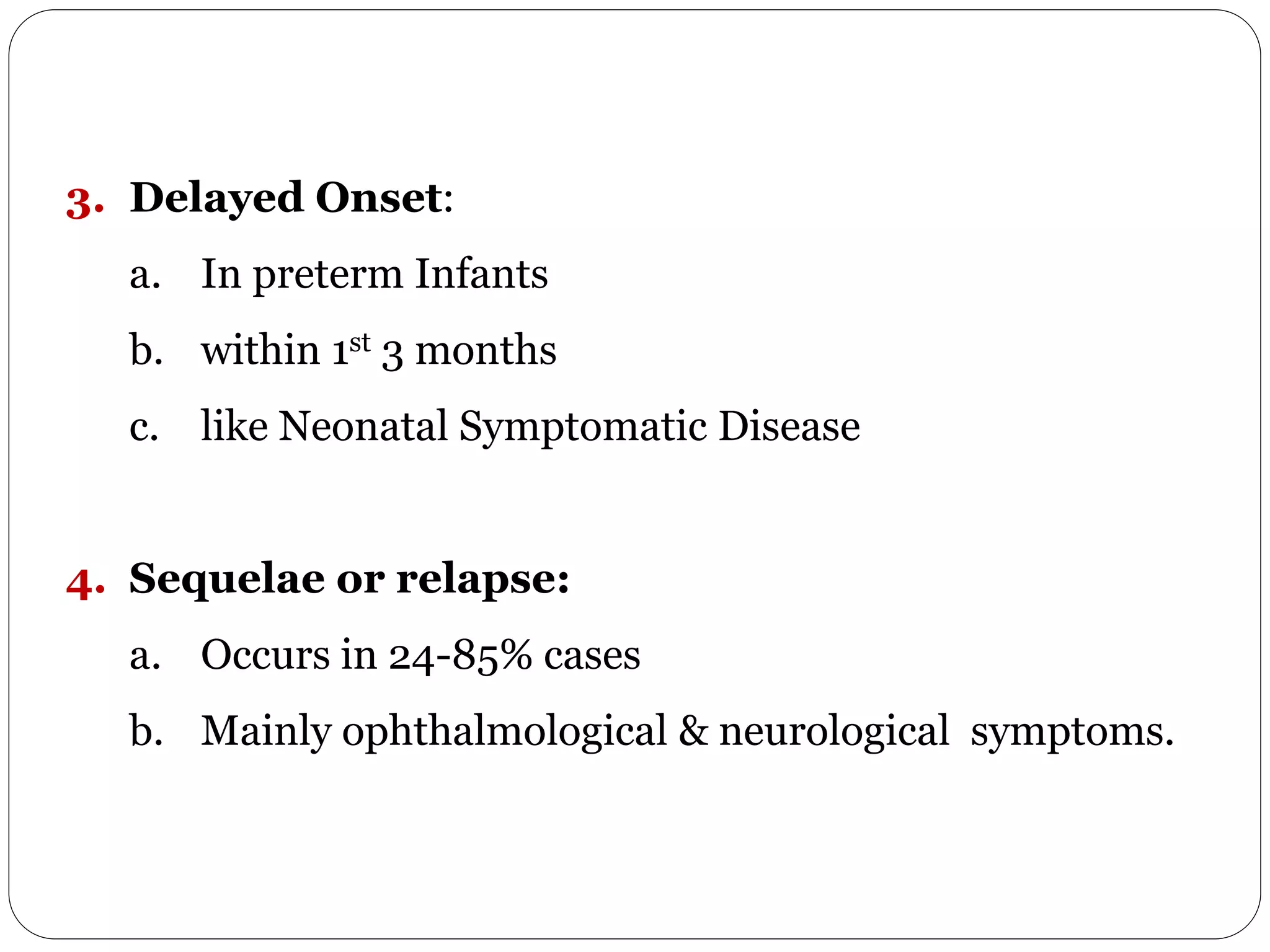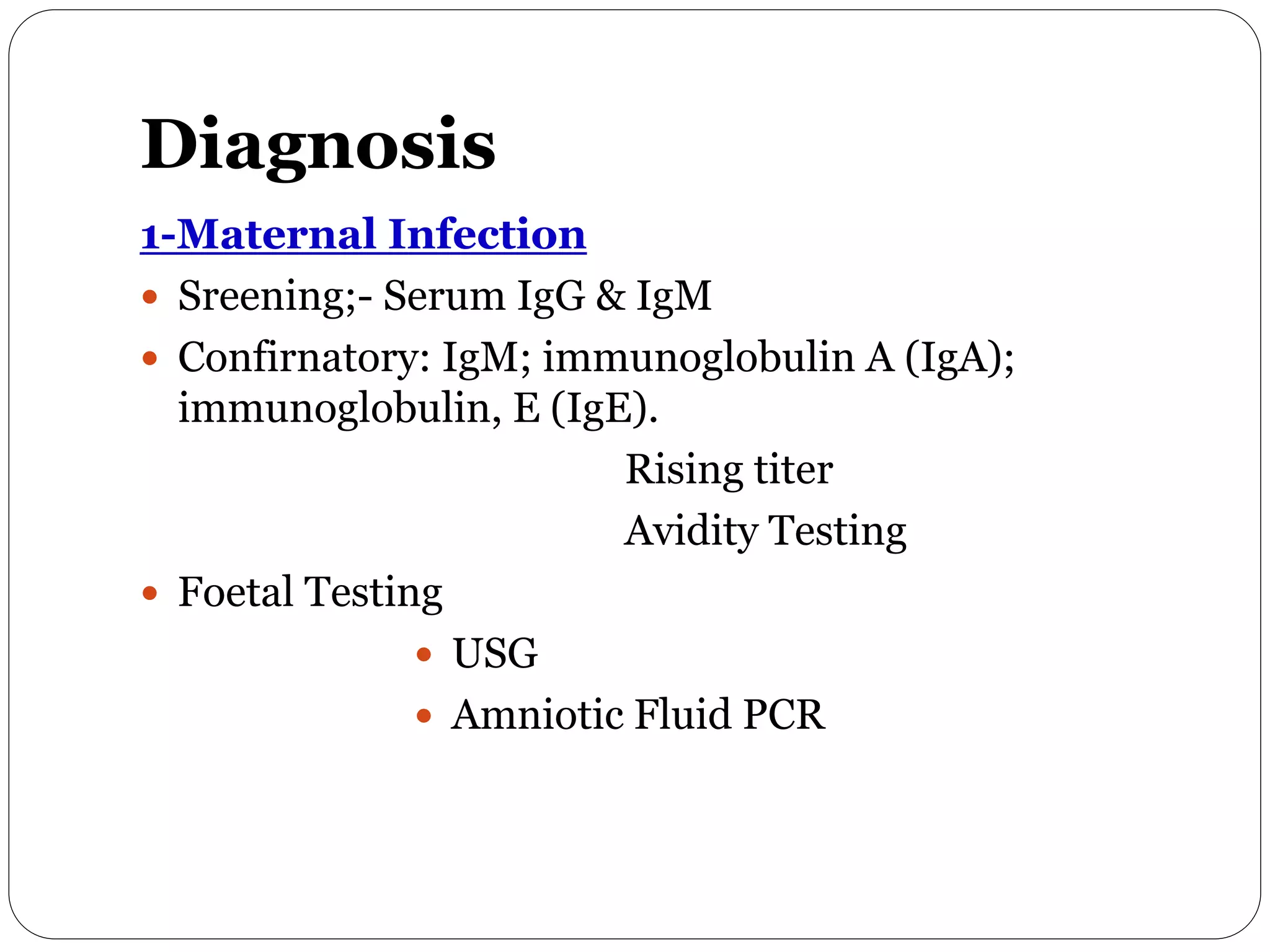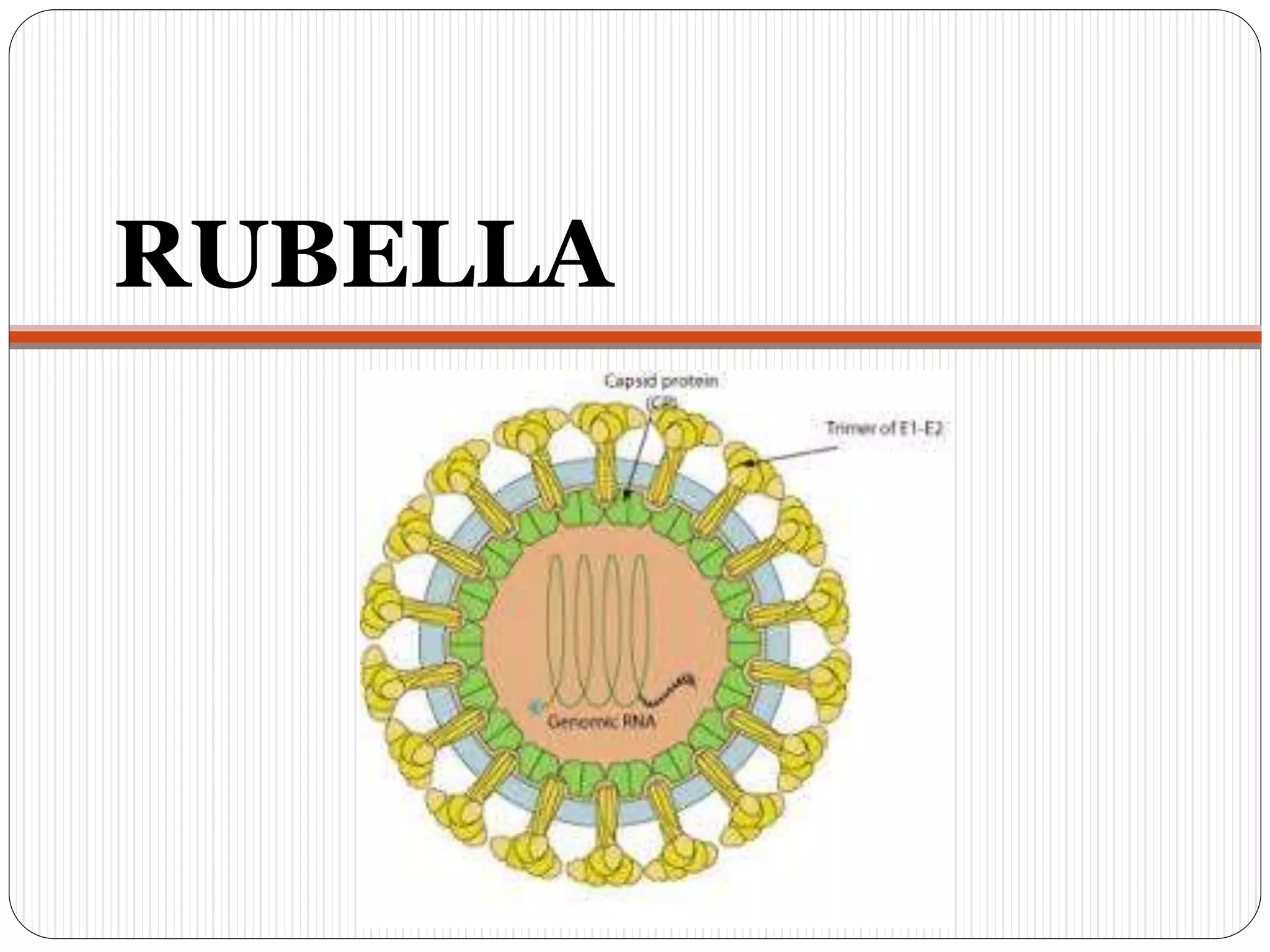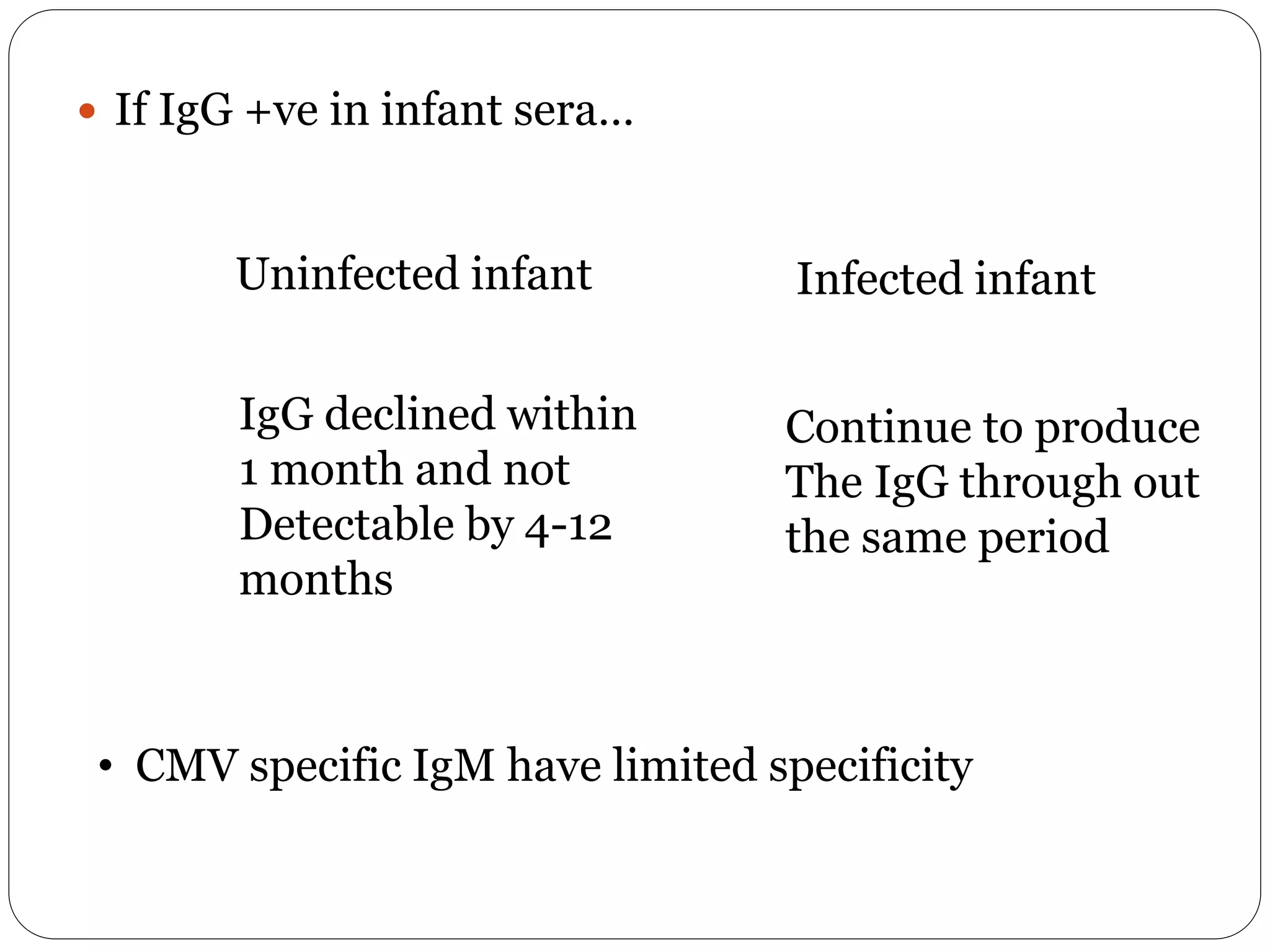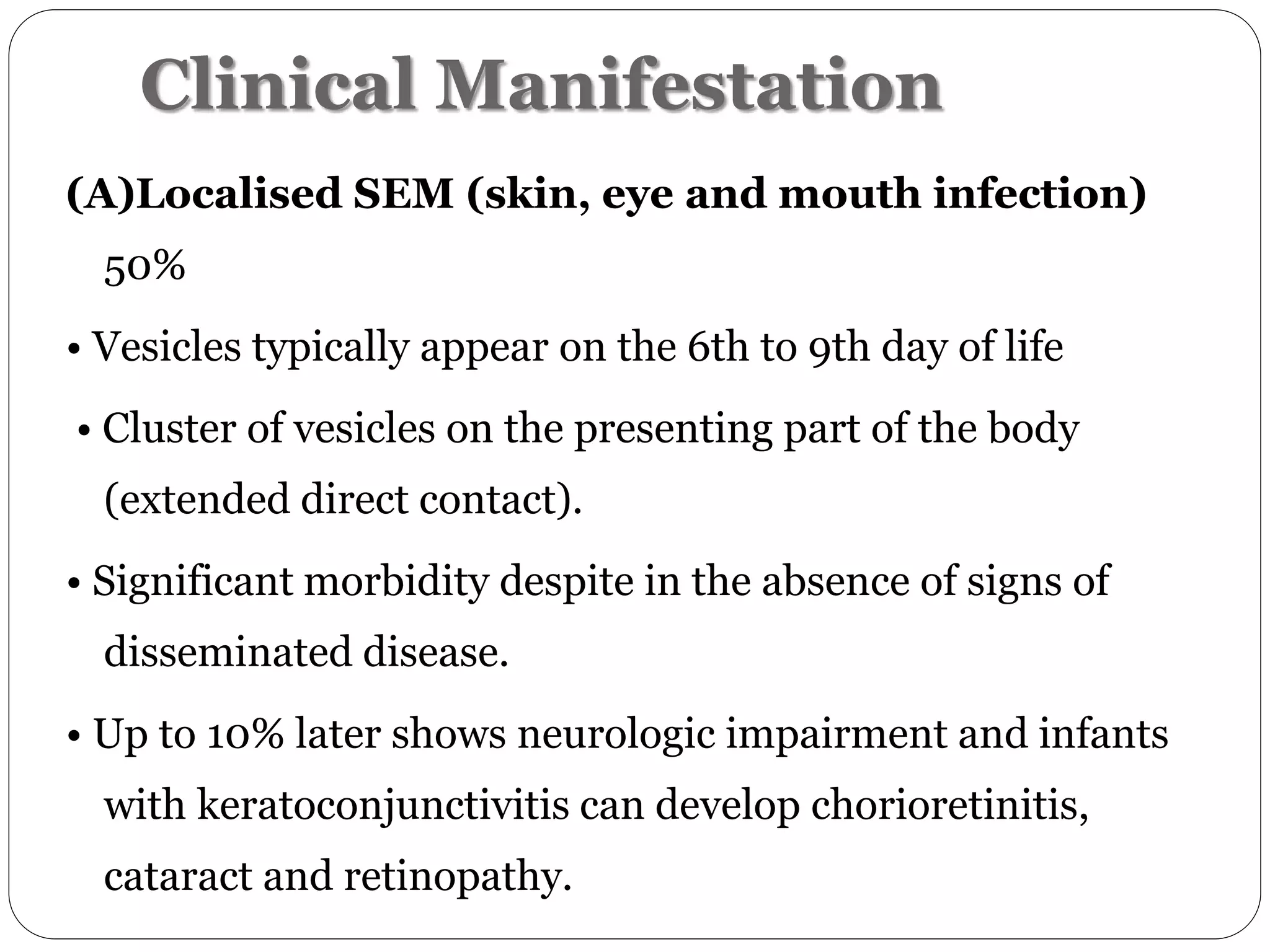The document discusses vertically transmitted infections from mother to child, focusing on congenital and perinatal infections, notably TORCH infections (Toxoplasmosis, Rubella, Cytomegalovirus, and Herpes Simplex Virus). It details the transmission methods, clinical manifestations, diagnosis, management, and prevention strategies for each infection, emphasizing the impact of gestational age on risks and outcomes. Comprehensive outlines are provided regarding the diagnosis and treatment of each infection in both mothers and neonates.
